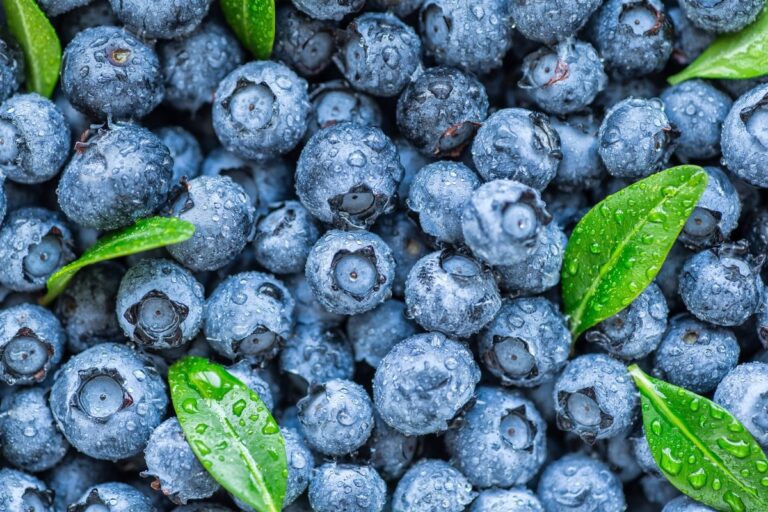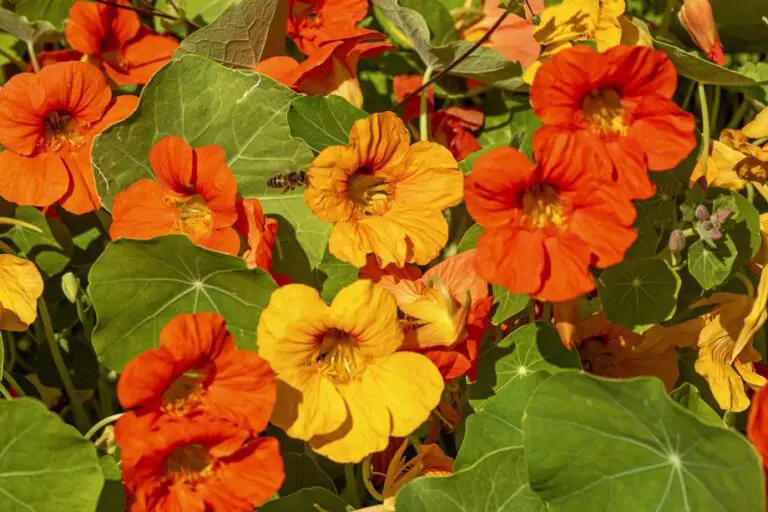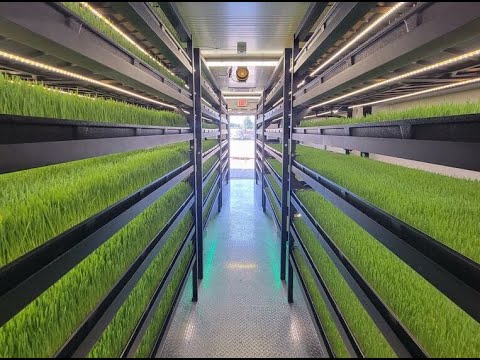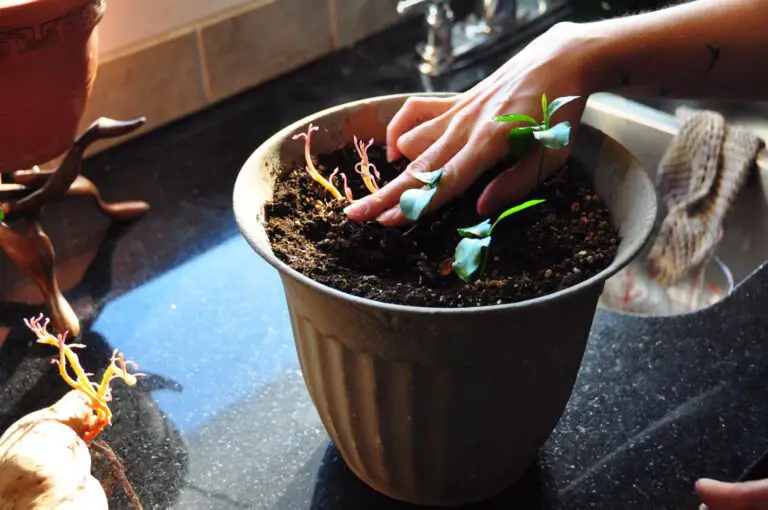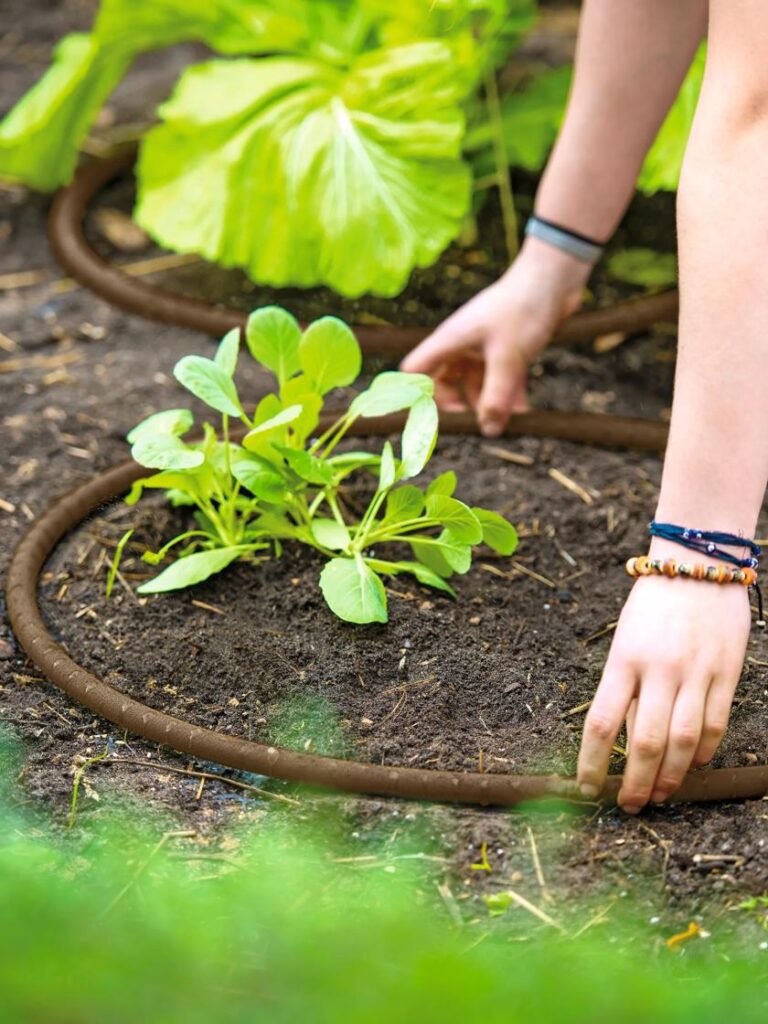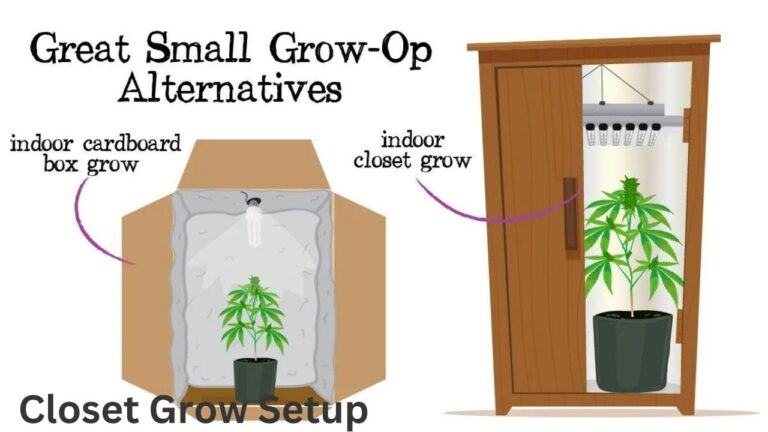Growing Cherry Tomatoes: Essential Growing Tips
Table of Contents
Selecting the Right Cherry Tomato Variety for Your Garden
Selecting the right cherry tomato variety for your garden is an important decision that can greatly influence your overall gardening experience. With so many different types of cherry tomatoes available, it can be overwhelming to determine which variety is best suited to your specific needs. To make an informed choice, it is essential to consider factors such as flavor, size, growth habit, disease resistance, and climate adaptability.
When it comes to flavor, cherry tomatoes offer a delightful burst of sweetness with varying degrees of acidity. Some popular flavorful options include the Sun Gold, Sweet Million, and Sungold Select II varieties. For those seeking larger sized fruits, the Super Sweet 100 or Sweet 1000 varieties are excellent choices. On the other hand, if you prefer smaller cherry tomatoes that can be used to garnish salads or enjoyed as a simple snack, the Tiny Tim or Supersweet 100 varieties are perfect options.

Aside from flavor and size, it is important to select a variety that suits your garden’s unique growing conditions. Factors such as climate, temperature, and sunlight availability play a significant role in determining which cherry tomato variety will thrive in your garden. For example, if you live in a region with shorter warm seasons, choosing early ripening varieties like Early Girl or Glacier tomatoes would be a wise choice. Similarly, if your garden receives ample sunlight, selecting varieties that are known for their high sun tolerance, such as Yellow Pear or Sun Gold tomatoes, will ensure optimal growth and productivity. By taking into account these factors, you can select the right cherry tomato variety that will guarantee a bountiful harvest and a delightful addition to your garden.
Understanding the Optimal Growing Conditions for Cherry Tomatoes
To ensure the successful growth of cherry tomatoes in your garden, it is important to understand the optimal growing conditions for these delicious fruits. Cherry tomatoes require specific environmental factors in order to thrive and produce bountiful harvests. Firstly, cherry tomatoes prefer a location that receives full sun exposure for at least 6 to 8 hours per day. This allows the plants to photosynthesize efficiently and develop the sugars necessary for flavor-packed fruits.
In addition to sunlight, cherry tomatoes also require well-drained soil that is rich in organic matter. When preparing the soil for planting, it is recommended to amend it with compost or well-rotted manure to improve its fertility and water-holding capacity. This helps to create a nutrient-rich environment that promotes healthy root development and overall plant vigor. Ideal soil pH for cherry tomatoes ranges between 6.0 and 6.8, slightly acidic to neutral, which allows for optimal nutrient uptake. By adhering to these specific growing conditions, you can maximize the chances of a successful cherry tomato harvest.
| Growing Condition | Optimal Range |
|---|---|
| Temperature | 70-85°F (21-29°C) |
| Sunlight | Full sun (6-8 hours/day) |
| Soil pH | 6.0-6.8 |
| Soil Type | Well-drained, loamy soil |
| Watering | Regular, consistent |
| Fertilization | Balanced NPK fertilizer |
| Pruning | Moderate pruning for air circulation |
| Support | Staking or caging |
| Pests/Diseases | Monitor and manage |
Preparing the Soil for Cherry Tomato Planting
Preparing the soil is a crucial step in ensuring the successful growth of cherry tomatoes. The first important aspect to consider is the soil type. Cherry tomatoes thrive in well-drained soil that is rich in organic matter. Loamy or sandy soils are ideal as they allow for proper water drainage while retaining the necessary moisture for plant growth.
Before planting, it is essential to test the soil pH to ensure it falls within the optimal range for cherry tomatoes, which is between 6.0 and 6.8. A pH level outside this range can hinder nutrient uptake and affect plant health. If the pH is too high or too low, amendments such as lime or sulfur can be added to adjust it accordingly.

Furthermore, preparing the soil involves removing any weeds or debris that may compete with the cherry tomato plants for nutrients and resources. Adding organic compost or well-rotted manure to the soil not only enriches it but also improves its water-holding capacity. This practice promotes microbial activity in the soil, leading to healthier plants and increased fruit production.
By providing the cherry tomato plants with a well-prepared soil, gardeners are setting the foundation for successful growth and high yields. Taking the time to assess the soil type, pH, and nutrient content is essential to create an optimal environment for these delightful tomato varieties to thrive.
Planting and Transplanting Cherry Tomato Seedlings
Planting and transplanting cherry tomato seedlings is a critical step in ensuring a successful harvest of these vibrant and flavorful fruits. When choosing seedlings, opt for sturdy and healthy specimens that are approximately 6-8 inches tall with well-developed root systems. Before planting, it is important to prepare the soil by amending it with organic matter, such as compost, to improve fertility and drainage.
When transplanting the seedlings, dig a hole that is slightly larger than the root ball and gently place the seedling into it. Ensure the seedling is upright and at the same depth as it was in the original container. Backfill the hole with soil and lightly tamp it down to eliminate any air pockets. Water the seedlings thoroughly immediately after transplanting, allowing the water to reach the roots and settle the soil around them.
| Step | Planting Cherry Tomato Seedlings | Transplanting Cherry Tomato Seedlings |
|---|---|---|
| 1. Seed Starting | Start seeds indoors 6-8 weeks before the last frost date. | N/A (Already started indoors) |
| 2. Soil Preparation | Use well-draining soil rich in organic matter. | Choose a sunny location with well-drained soil. |
| 3. Planting Depth | Plant seedlings deep, burying the stem up to the first set of leaves. | Plant seedlings at the same depth they were growing in their containers. |
| 4. Spacing | Space seedlings 18-24 inches apart. | Space seedlings 18-24 inches apart. |
| 5. Watering | Keep soil consistently moist, but not waterlogged. | Water seedlings immediately after transplanting and keep soil evenly moist. |
| 6. Fertilizing | Fertilize with a balanced fertilizer every 2-3 weeks. | Fertilize 2 weeks after transplanting, then every 3-4 weeks. |
| 7. Support | Provide support for the plants using stakes or cages. | Provide or reinforce support for the plants. |
| 8. Mulching | Apply mulch around plants to conserve moisture and suppress weeds. | Apply mulch after transplanting to conserve moisture. |
| 9. Pruning | Remove suckers and prune for air circulation. | Continue to prune for airflow and to remove any damaged leaves. |
| 10. Maintenance | Monitor for pests and diseases; treat as needed. | Continue monitoring for pests and diseases; treat promptly. |
| 11. Harvesting | Harvest ripe tomatoes regularly to encourage more fruit production. | Harvest ripe tomatoes regularly as they mature. |
Proper spacing between cherry tomato seedlings is crucial to promote optimal growth and prevent overcrowding. Aim to space the seedlings 18-24 inches apart in rows that are 3-4 feet apart. This not only allows for better air circulation and sunlight penetration but also prevents the spread of diseases.
By following these planting and transplanting techniques, you provide your cherry tomato seedlings with a solid foundation for healthy growth and abundant fruit production. Soon enough, you’ll be rewarded with a bountiful harvest of juicy and delicious cherry tomatoes to enjoy in your culinary creations.
Watering Techniques for Thriving Cherry Tomato Plants
Watering techniques play a crucial role in ensuring the healthy growth and abundant yield of cherry tomato plants. Proper watering helps to maintain the right moisture levels in the soil, preventing issues such as blossom-end rot and cracking. It is important to strike a balance, as both overwatering and underwatering can be detrimental to the plants.
When it comes to watering cherry tomatoes, it is generally recommended to provide a steady supply of water, evenly moistening the soil. The frequency of watering will depend on various factors such as weather conditions, soil type, and container size. As a general rule, it is advised to water deeply but infrequently. This encourages the plants to develop deep root systems, allowing them to access water and nutrients more efficiently. However, it is crucial not to let the soil dry out completely between waterings, as this can cause stress to the plants and affect their productivity. Monitoring the moisture levels using a moisture meter or simply inserting your finger into the soil can help you determine when it’s time to water.

In addition to regular watering, mulching the soil around the cherry tomato plants can be beneficial. A layer of organic mulch, such as straw or wood chips, helps to retain moisture, regulate soil temperature, and suppress weed growth. Mulching also helps to prevent soil erosion and keeps the fruit clean by reducing soil splashing. Be sure to leave a small gap between the mulch and the stem of the plant to prevent the risk of rot or fungal diseases.
By following these watering techniques, you can ensure your cherry tomato plants receive the right amount of water, leading to healthy growth and a bountiful harvest. However, it is important to keep in mind that the specific watering needs may vary based on individual plant requirements and environmental conditions. Observing your plants closely, understanding their needs, and adapting your watering routine accordingly will help to foster optimal growth and productivity.
Providing Adequate Nutrients for Healthy Cherry Tomato Growth
Cherry tomatoes are a popular choice for home gardeners due to their sweet flavor, vibrant colors, and compact size. To ensure healthy growth and a bountiful harvest, it is essential to provide adequate nutrients to these plants.
One crucial nutrient for cherry tomatoes is nitrogen, which is necessary for robust foliage development. Nitrogen can be supplied through organic matter such as compost or well-rotted manure. Additionally, nitrogen-rich fertilizers like fish emulsion or blood meal can be applied during the growing season. However, it is crucial to strike the right balance, as an excess of nitrogen can lead to excessive foliage growth at the expense of fruit production.
Another important nutrient for cherry tomatoes is phosphorus, which plays a vital role in flower and fruit formation. Phosphorus can be added to the soil through bone meal or rock phosphate, at the time of planting or as a side dressing during the growing season. Adequate phosphorus levels ensure proper reproduction and the development of juicy, flavorful fruits.
In addition to nitrogen and phosphorus, potassium is an essential nutrient that supports overall plant health and disease resistance. Potassium can be supplied through potash-based fertilizers or organic sources such as wood ash or banana peels. Providing sufficient potassium will encourage strong root development and help plants withstand stressors such as extreme temperatures or pests.
Ensuring that cherry tomato plants receive adequate nutrients is vital for their optimal growth and productivity. By understanding the specific nutrient requirements of these plants and providing them in the right amounts and at the right time, you will be rewarded with healthy plants that produce an abundance of delicious cherry tomatoes for you to enjoy.
Pruning and Training Cherry Tomato Plants for Maximum Yield
Pruning and training cherry tomato plants is essential for maximizing their yield and ensuring healthy growth. By following proper techniques, you can promote optimal fruit production and create a more manageable and organized plant structure.
Pruning is the process of selectively removing certain parts of the plant, such as suckers or excessive foliage, to direct energy towards fruit development. It also helps improve air circulation, reducing the risk of diseases and pests. When pruning cherry tomatoes, it is crucial to focus on removing suckers, which are the small shoots that sprout in the leaf axils. By removing these suckers, the plant can channel its energy into producing more fruit rather than excessive foliage.
Training cherry tomato plants involves supporting their sprawling vines to keep them off the ground and prevent them from getting tangled or damaged. Various methods can be used, such as staking or caging. Staking involves driving a tall stake into the ground next to the young tomato plant, tying the main stem to the stake as it grows. On the other hand, caging involves placing a wire cage around the plant to support its growth. Training not only helps improve air circulation and sunlight exposure but also makes harvesting easier and reduces the risk of diseases like blight.
To further enhance the productivity of cherry tomato plants, it is crucial to stay vigilant and continue monitoring their growth. Regularly check for new suckers and remove them promptly to maintain a desirable structure. Additionally, ensure that you provide adequate support as the plant grows taller to prevent it from toppling over or breaking under the weight of the fruit. With proper pruning and training techniques, you can enjoy a bountiful harvest of flavorful cherry tomatoes from your garden.
Managing Pests and Diseases in Your Cherry Tomato Garden
Pests and diseases can pose a significant threat to the health and productivity of your cherry tomato garden. It is crucial to implement effective management strategies to protect your plants and ensure a successful harvest.
One common pest that can wreak havoc on cherry tomatoes is the tomato hornworm. These large caterpillars can quickly defoliate plants and cause extensive damage. To control them, you can manually remove the pests or introduce natural predators such as parasitic wasps and predatory beetles. Additionally, using organic insecticides like neem oil or Bacillus thuringiensis can provide effective control without harming beneficial insects.
Another common issue in cherry tomato gardens is fungal diseases, such as early blight and powdery mildew. These diseases can cause foliage discoloration, stunted growth, and reduced fruit production. To prevent fungal infections, it is important to practice good sanitation by removing infected leaves and avoiding overhead watering. Applying fungicides containing copper or sulfur can also help prevent and control fungal diseases. Implementing a regular spraying schedule, especially during periods of high humidity, can significantly reduce the risk of infection and safeguard the health of your cherry tomato plants.
By effectively managing pests and diseases in your cherry tomato garden, you can ensure that your plants thrive and produce an abundant and healthy harvest. Stay vigilant and proactive in your approach, implementing proper control measures and treatments as needed. With the right strategies in place, you can enjoy the bountiful rewards of a thriving cherry tomato garden.
Harvesting and Storing Cherry Tomatoes for Freshness and Flavor
To ensure the utmost freshness and flavor in your cherry tomatoes, proper harvesting and storing techniques are essential. Picking the fruits at their peak ripeness is crucial for maximum taste and texture. When harvesting, gently twist or cut the cherry tomatoes from the vine, being careful not to damage the surrounding foliage. Select only fully ripe tomatoes, as they will offer the best flavor. Unripe fruits can be left on the vine to mature further.
After harvesting, it is important to store the cherry tomatoes correctly to maintain their freshness and flavor. One effective method is to store them at room temperature, away from direct sunlight, in a single layer. This allows the tomatoes to continue ripening while preventing them from becoming overly soft or developing an off taste. Storing them in a cool, dark place can also help to extend their shelf life without sacrificing flavor. Avoid storing cherry tomatoes in the refrigerator unless they are already overripe, as the cold temperature can negatively affect their taste and texture.
Troubleshooting Common Issues in Cherry Tomato Cultivation
When it comes to cherry tomato cultivation, there are several common issues that gardeners may encounter. One of the most prevalent issues is blossom end rot, which is characterized by dark, sunken spots that develop on the bottom of the fruit. This condition is caused by a calcium deficiency in the plant, often related to inconsistent watering or poor soil quality. To prevent blossom end rot, it is important to maintain consistent moisture levels in the soil by watering the plants regularly and deeply. Additionally, adding compost or well-rotted manure to the planting area can help improve soil fertility and calcium levels, reducing the likelihood of this issue.
Another common problem in cherry tomato cultivation is the presence of pests, particularly aphids and whiteflies. These tiny insects can quickly multiply and infest the plants, causing damage to both leaves and fruits. To manage these pests, it is essential to regularly inspect the plants and act promptly at the first signs of infestation. Natural options for control include introducing beneficial insects like ladybugs or lacewings, using insecticidal soap or neem oil sprays, or creating physical barriers such as fine mesh netting. It is advisable to avoid using chemical pesticides, as they can harm beneficial insects and have negative impacts on the environment. By implementing these preventive measures and taking swift action against pests, gardeners can ensure healthier and more productive cherry tomato plants.
How do I select the right cherry tomato variety for my garden?
When selecting a cherry tomato variety, consider factors such as flavor, size, disease resistance, and growing conditions. Some popular varieties include Sweet 100, Sungold, and Black Cherry.
What are the optimal growing conditions for cherry tomatoes?
Cherry tomatoes thrive in full sun, with at least 6-8 hours of direct sunlight per day. They prefer well-draining soil with a pH level between 6.0-6.8. The temperature should be consistently warm, ideally around 70-85°F (21-29°C).
How should I prepare the soil for cherry tomato planting?
Before planting, ensure that the soil is well-drained and amended with organic matter. Remove any weeds or debris and loosen the soil. Adding compost or aged manure can help improve the soil’s fertility.
What is the best technique for watering cherry tomato plants?
Cherry tomatoes require regular watering, aiming to keep the soil consistently moist but not waterlogged. It is beneficial to water deeply, allowing the water to penetrate the root zone. Avoid overhead watering to prevent diseases.
How can I provide adequate nutrients for healthy cherry tomato growth?
Fertilize cherry tomato plants with a balanced fertilizer that is high in phosphorus and potassium. Apply the fertilizer according to the package instructions, taking care not to over-fertilize as it can lead to excessive foliage growth instead of fruit production.
Should I prune and train cherry tomato plants?
Pruning and training cherry tomato plants can help maximize yield and prevent diseases. Remove suckers, which are the small shoots that grow in the leaf axils. Use stakes or tomato cages to support the plants and keep them upright.
How can I manage pests and diseases in my cherry tomato garden?
To manage pests, regularly inspect your plants for signs of infestation and use organic pest control methods when necessary. Common diseases in cherry tomatoes include blight and blossom end rot. Proper sanitation, good air circulation, and avoiding overhead watering can help prevent these issues.
When should I harvest and store cherry tomatoes for freshness and flavor?
Harvest cherry tomatoes when they are fully ripe and have a vibrant color. Gently twist or cut the fruit from the vine. To store them, keep them at room temperature if you plan to consume them within a few days. Otherwise, store them in a cool, dry place.
What are common issues that can arise in cherry tomato cultivation?
Common issues in cherry tomato cultivation include blossom drop, yellowing leaves, fruit cracking, and lack of fruit production. These problems can be caused by environmental factors, nutrient deficiencies, pests, or diseases. Proper care, regular monitoring, and timely action can help address these issues.

Pallavi Gupta is a burgeoning writer at SouthElMonteHydroponics, blending her passion for data analysis with a keen interest in biotechnology. Currently pursuing a Bachelor’s in Biotechnology at Amity University, Pallavi delves into the intricacies of life sciences while gaining hands-on experience in the exciting world of data analysis. Her unique background provides a fresh perspective on hydroponic farming, as she explores the intersection of biotechnology and sustainable agriculture. Through her writing, Pallavi aims to bridge the gap between data-driven insights and innovative farming practices, inspiring others to harness technology for a greener future.

